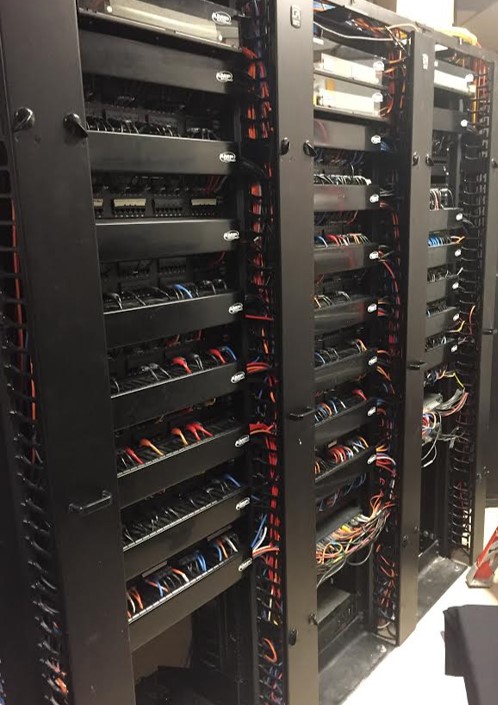
At first glance, it would seem that society is dominated by wireless systems that transmit data in a manner invisible to the human eye. What is even less visible is the hundreds of thousands of miles of fiber optics that carry information at the speed of light, and the data centers that store and near instantaneously dole out this information at a user’s behest. The speed at which this information transfers has become almost second nature, and when a connection is slow to respond it can create less than optimal experiences, what NYU Media, Culture, and Communication professor Nicole Starosielski refers to as the ‘aesthetics of lag’1 a term that updates Lucas Hildebrand’s notion of the ‘aesthetics of access’ which refers to the degrading of videotapes over repeated viewing. While digital information does not degrade in the same way as videotapes, the medium is susceptible to simultaneous repeated viewing, through restrictions in bandwidth, and the limitations of the data centers that serve up the information.

While fiber optics are far faster at carrying information that any wireless standard, the connections break far more often than we realize. According to a 2008 WIRED Magazine article, undersea fiber cables break every three days, and terrestrial cables break far more often than that.2 Thanks to the mandated use of decentralized networking, no on break in a line causes a complete break in the connection of the internet. The use of distributed networking is a holdover from the internet’s days of infancy, where it started first as a project of ARPA (Advanced Research Projects Agency) and then later under DARPA (Defense Advanced Research Projects Agency) as the agency moved under the umbrella of the U.S. Department of Defense during the Cold War. The thought being that distributed networking would make the United States national information network impervious to nuclear attack.3,4


It is not just breaks that must be dealt with on a regular basis. Switching equipment is necessary to keep the fiber links up and running, and along with these switches comes a need for electricity, cooling, and security to keep the connections safe at every connection point. One such point is a network hotel, which WIRED toured in a 2015 article. The ‘hotel’ in downtown Manhattan was merely an outward façade of the building’s previous use. Inside were thousands of miles of cable, where fiber long haul cables come in from around the country and interfaces with local internet service providers.5 It is important to note that no fiber optic cable is without these types of facilities on either side of a cable.
It is easy to turn a blind eye to the infrastructures necessary to keep our wireless world functioning. However if we peel back the black boxing of ‘technology’ and look at the technical systems that allow our current forms of communication to exist, we find that there are material infrastructures behind every bit of invisible ‘magic’.
Sources
1 Starosielski, Nicole 2015. Fixed Flow: Undersea Cables as Media Infrastructure. In Signal Traffic: Critical Studies of Media Infrastructures. Urbana; Chicago; and Springfield: University of Illinois Press, p. 53.
2 WIRED Staff (2008). Cable Cut Fever Grips the Web. [online] WIRED. Available at: https://www.wired.com/2008/02/who-cut-the-cab/ [Accessed 19 Nov. 2019].
3 Green, L., 2010. The internet : an introduction to new media., Oxford: Berg.
4 Galloway, A.R. & American Council of Learned Societies, 2004. Protocol : how control exists after decentralization., Cambridge, Mass.: MIT Press.
5 WIRED Staff (2015). The Internet Lives in a Huge Hotel in Manhattan. [online] WIRED. Available at: https://www.wired.com/2015/11/peter-garritano-where-the-internet-lives/ [Accessed 19 Nov. 2019].